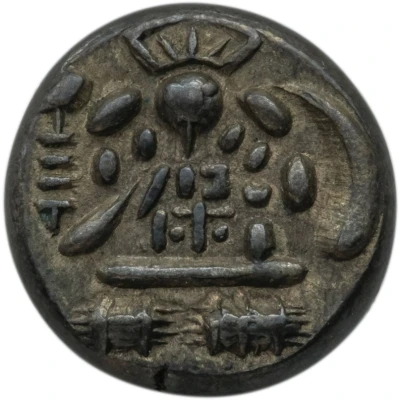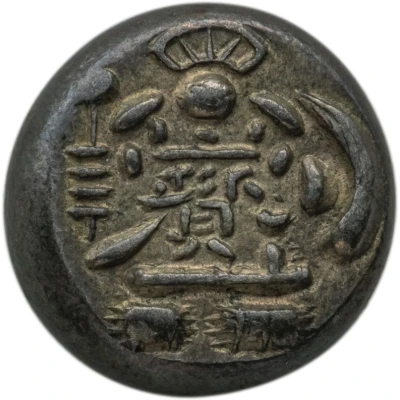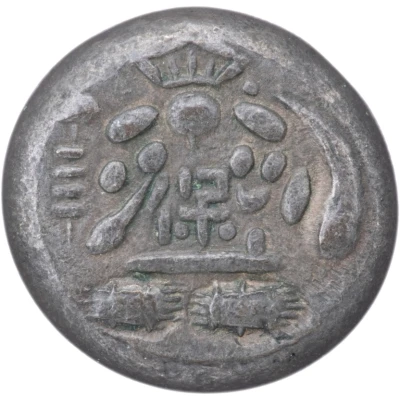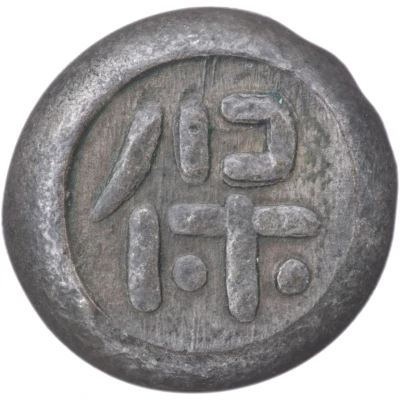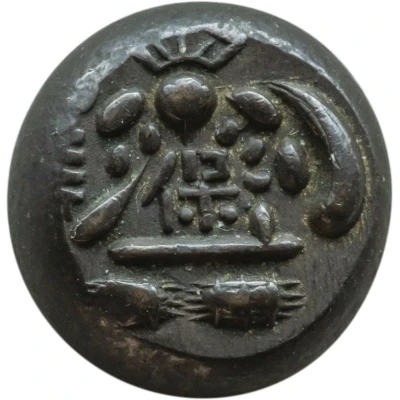
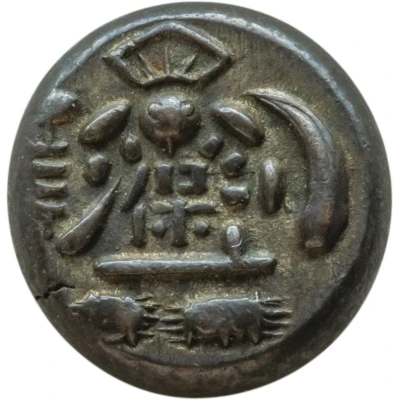

© Ginza Coin Auctions
"Tenpō Mameitagin" Double Daikoku ND
| Billon (.260 silver) | - | - |
| Issuer | Japan |
|---|---|
| Type | Standard circulation coin |
| Years | 1837-1858 |
| Currency | Monme Silver / Monme-Gin / Ginme (1601-1874) |
| Composition | Billon (.260 silver) |
| Shape | Round (irregular) |
| Technique | Hammered (bean) |
| Orientation | Medal alignment ↑↑ |
| Demonetized | 28 June 1868 |
| Updated | 2024-10-05 |
| Numista | N#285343 |
|---|---|
| Rarity index | 93% |
Reverse
Daikoku with a character inside, indicates Tenpō era
Lettering: 保
Translation: Hō
Interesting fact
One interesting fact about the "Tenpō Mameitagin" (Double Daikoku) coin is that it was issued during a time of economic reform in Japan, known as the Tenpō period, which aimed to promote economic growth and stability by introducing new currency and monetary policies. The coin's unique design, featuring two Daikoku (a mythical creature representing prosperity and good luck) on opposite sides, symbolized the government's efforts to promote economic prosperity and stability during this time.
